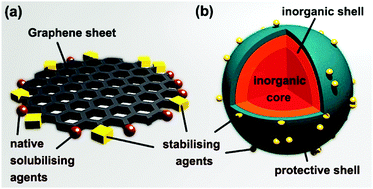Semiconductor versus graphene quantum dots as fluorescent probes for cancer diagnosis and therapy applications
Abstract
Early diagnosis of cancer is of critical importance in determining the outcome of a patient, and nanoparticulate fluorophores have been at the centre of research for such applications owing to their superior optical properties. Furthermore, the large surface area to volume ratios of these fluorophores enables them to be endowed with several modalities, including the targeting of specific biomarkers and drug delivery capabilities, promoting them as therapeutic agents as well. Over the last few decades, semiconductor quantum dots have dominated the field due to their unique yet well characterised optical properties. However, the scope of their application for diagnosis and therapy of cancer has been hindered by declarations of in vivo toxicity attributed to heavy metals typically found in their composition. Recent arrivals graphene quantum dots, or carbon-derived counterparts to SQDs, are often claimed to be biocompatible but they have complicated optical properties. In this review, we compare the properties of these two types of quantum dots in view of their employment as fluorescent agents for cancer diagnosis and therapy.

- This article is part of the themed collection: Recent Review Articles


 Please wait while we load your content...
Please wait while we load your content...